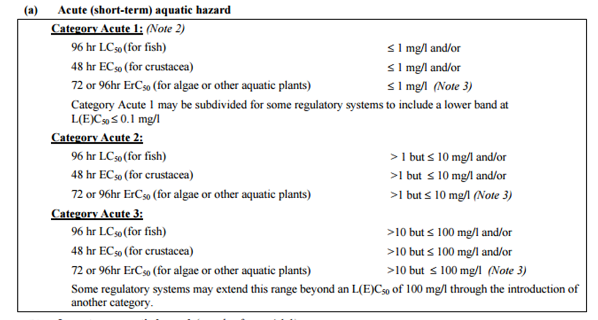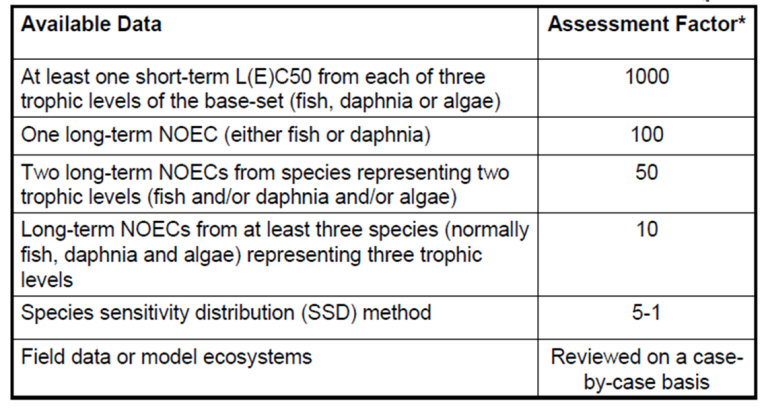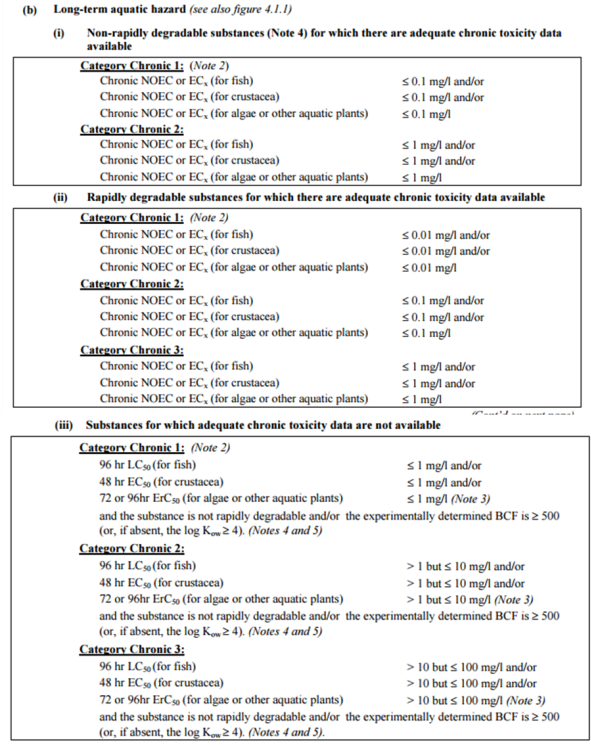Aquatic Toxicity
Little Pro on 2016-03-23
Aquatic toxicity is defined as the study of the effects of a chemical substance to aquatic species which is usually determined on organisms representing the three trophic levels, i.e. vertebrates (fish), invertebrates (crustaceans as Daphnia) and plants (algae). In this article, we will summarize how study results are given (LC50, NOEC) and provide acute and chronic aquatic toxicity classification criteria.
Fish
- Acute toxicity to fish (96hrs, LC50 in mg/l): The acute toxicity is expressed as the median lethal concentration (LC 50) that is the concentration in water which kills 50% of a test batch of fish within a continuous period of exposure which is usually 96hrs.
- Long term toxicity (28days, NOEC in mg/l): The chronic toxicity is expressed as No observed effect concentration (NOEC) that is the concentration in water which below an unacceptable effect is unlikely to be observed.
Daphnia
- Acute toxicity to Daphnia (48hrs, EC50 in mg/l): The Acute toxicity is expressed as the median effective concentration (EC 50) for immobilization. This is the concentration which immobilizes 50% of the Daphnia in a test batch within a continuous period of exposure which is usually 48hrs.
- Long term toxicity to Daphnia (21days, NOEC in mg/l): This chronic eco-tox study assesses the effect of chemicals on the reproductive output of Daphnia magna. Sometimes, the lowest observed effect concentration (LOEC) is given.
Algae
- Acute toxicity to algae (72-96 hrs, EC50 in mg/l): EC50 is the concentration of test substance which results in a 50 percent reduction in either growth (EbC50) or growth rate (ErC50) relative to the control within 72hrs exposure.
Read more: how to use ErC50, EbC50, ErC10 and NOEC data from algae study
Acute and chronic aquatic toxicity classification criteria under GHS
Acute aquatic toxicity data and chronic aquatic toxicity data are essential for determining the environmental hazard classification of a chemical substance under GHS. Dangerous goods regulations also require this data to determine if a material is a marine pollutant or not.
The picture below summarizes acute and chronic aquatic toxicity classification criteria. Lower LC50/EC50/NOEC indicates higher toxicity. Please note that degradation and bio-concentration shall also be taken into account.

Risk Assessment and Aquatic Toxicity
Under REACH, EC50/LC50/NOECs obtained via aquatic toxicity studies will be divided by various assessment factors (according to the table below) to calculate Predicted No Effect concentrations(PNEC) for the aquatic environment. The Predicted No Effect Concentration or PNEC is the concentration of a substance in any environment below which adverse effects will most likely not occur during long term or short term exposure. PNECs will then be compared to predicted environmental concentration (PEC) to determine if risk is controlled or not.

Testing Guidelines
- Fish: Fish Acute Toxicity Test (OECD TG 203), Short-term Toxicity Test on Embryo and Sac-Fry Stages (OECD TG 212), Fish Early-life Stage Toxicity Test (OECD 210), Fish Juvenile Growth Test (OECD TG 215);
- Daphnia: Daphnia sp. Acute Immobilisation Test (OECD TG 202), Daphnia magna Reproduction Test (OECD TG 211);
- Algae: Freshwater Alga and Cyanobacteria, Growth Inhibition Test (OECD TG 201).
All testing guidelines above can be accessed here.
 |
Congratulations! You have learned the definition of aquatic toxicity (acute and chronic), tested species, testing guidelines, dose descriptors (LC50, EC50, NOEC, etc), GHS classfication criteria for aquatic toxicity and how they are used for environmental risk assessment. |
Continue Learning...
- Aquatic toxicity
- Degradation (biotic and abiotic)
- Bio-accumulation
- Terrestrial toxicity
- Soil Adsorption Coefficient (Kd/Koc)
Having Questions?
We do not provide consultancy services. If you have questions or need any help, please contact our sponsor. You may also find an expert in CSP business directory below. If you are a consultant, you may get yourself listed in CSP business directory (free) or sponsor this page to leave your contact info on this page..

Tags: Topics - CRA, Environmental Risk Assessment
